The Feathered Serpent
Notes: hmmph...missed the game...Houston and Angels in Monterrey, Mexico...afternoon nap...anyway...a loose end from previous post...wanted to post a close up of the Descending God on El Palecio temple at Sayil...brb...
quote
Honey was a major commodity that was traded around the Yucatán and along the trade routes of Mesoamericans. With the importance of honey and bees on the Yucatán Peninsula it is understandable to see why the Descending God was located at these four sites. The bees played an important role in commerce, daily life and religious life on the Yucatán Peninsula. The Maya not only traded commodities, but ideas as well. One of the ideas that they traded was that of the Descending God, as evidenced by its replicas at cites in Tulum, Cobá, Sayil, and Chichen Itzá.
In addition to being associated with bees, the Descending God was also associated with Venus and as with other societies,
Cite this Page
Debra Sandidge, “The Descending God,” HistoricalMX, accessed May 6, 2019, http://historicalmx.org/items/show/10.
unquote
site has pics...and, I need one of them, but it's copy protected...brb...
quote
For instance, in the Mayan Book of ‘The Chilam Balam of Chumayel’, the Ritual of the Four World Quarters features wild Bees as the liaisons between humans and sun gods. The work features the Bee god Ah Muzen Cab, known as ‘Great Lord Bee’, who may be related to the Aztec Bee god, Xmul-Zen-Cab. Ah Muzen Cab’s ancestral home can be found at the Mayan site of Tulúm and Coba, where he is depicted guarding the temples’ most sacred sanctuaries. Not surprisingly, the famous and rather controversial Swiss author, Erich von Däniken, questioned the association of Mayan gods with Bees, and in his 1972 book ‘The Gold of The Gods’ stated that he believed the images reflected extraterrestrial origins.

One of the most intriguing links between Mayan and Egyptian cultures is the word Hu-Nab-Ku. Ku in ancient Sumer means ‘light’ and in ancient Egyptian Khu means ‘Magical Body’, recalling the Egyptian name for the Sphinx; Hu Nb. And what is the Sphinx if not a magical body? The interesting thing is that Hu-Nab-Ku, whose name is sometimes written as Huun Ab Ku, meaning ‘One is God as Measure and Movement’, was actually a Mayan Divinity who created the concept of Measure and Motion in Mayan mythology. In fact, the Mayans attributed the entire mathematical structure of the universe to his creation, and his work is represented by a square within a circle. The Mayan divinity is also related to the Egyptian God Thoth, who is said to have travelled to South America and shared his knowledge with the local gods in antiquity – possibly the pre-Columbian Olmecs, but certainly pre-Mayan.
like rabbits out of a magician's top hat...that site was linked last season...one begins to wonder who didn't diffuse to the New World...but I still haven't got the pic I want...brb...
quote
unquote
well, that's the loose end...and there the Descending God is so stylized to add to the obscurity of things!...some depictions are more plane...brb...
quote
unquote
don't know but he looks like a modern sky diver with a smoke flare!...lol...and one hand holding a torch is a motif on many of these...more on the Descending God for sometime...the searches turned up something I noted before but didn't note, on second look, it's notable!...brb...
quote
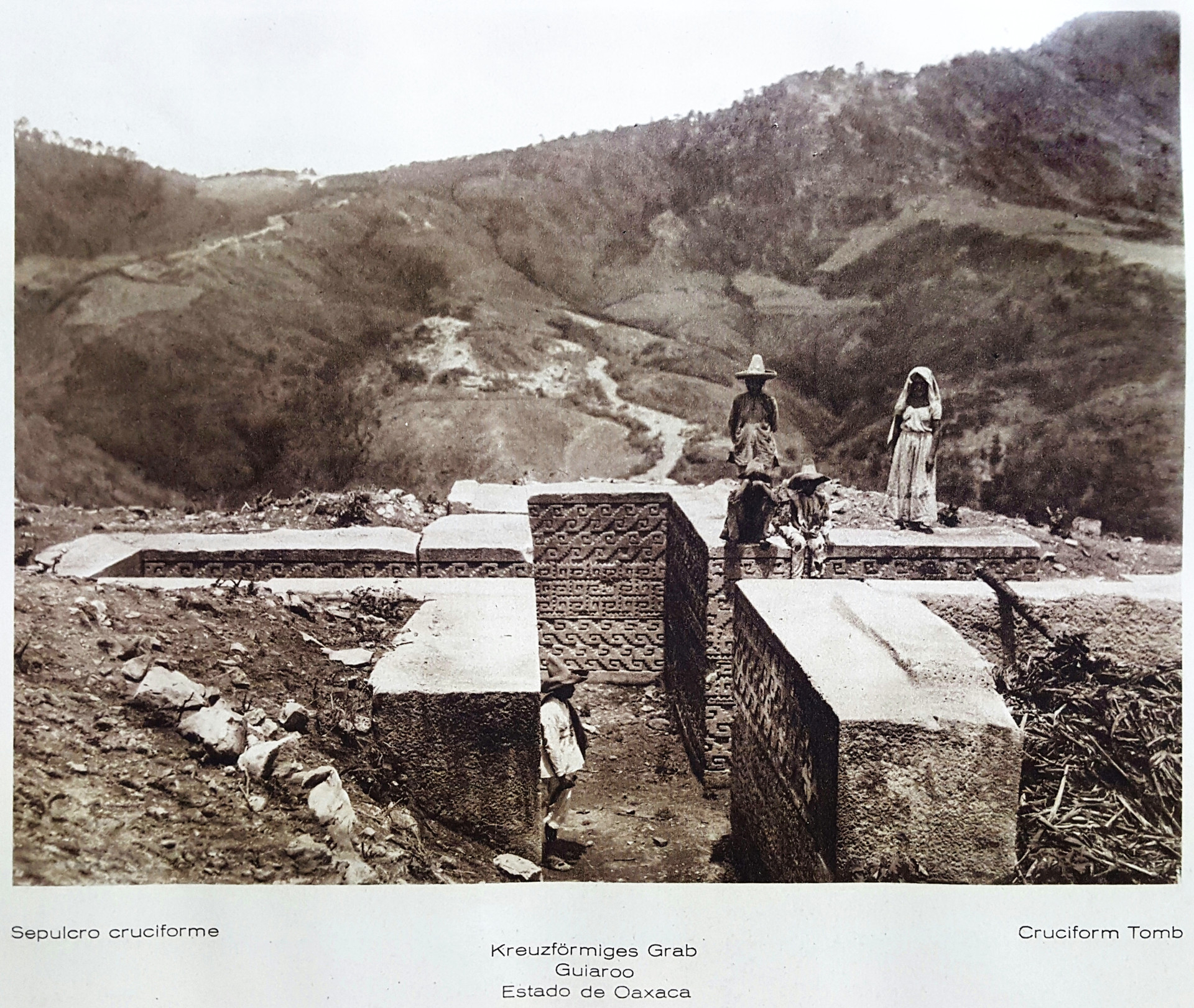
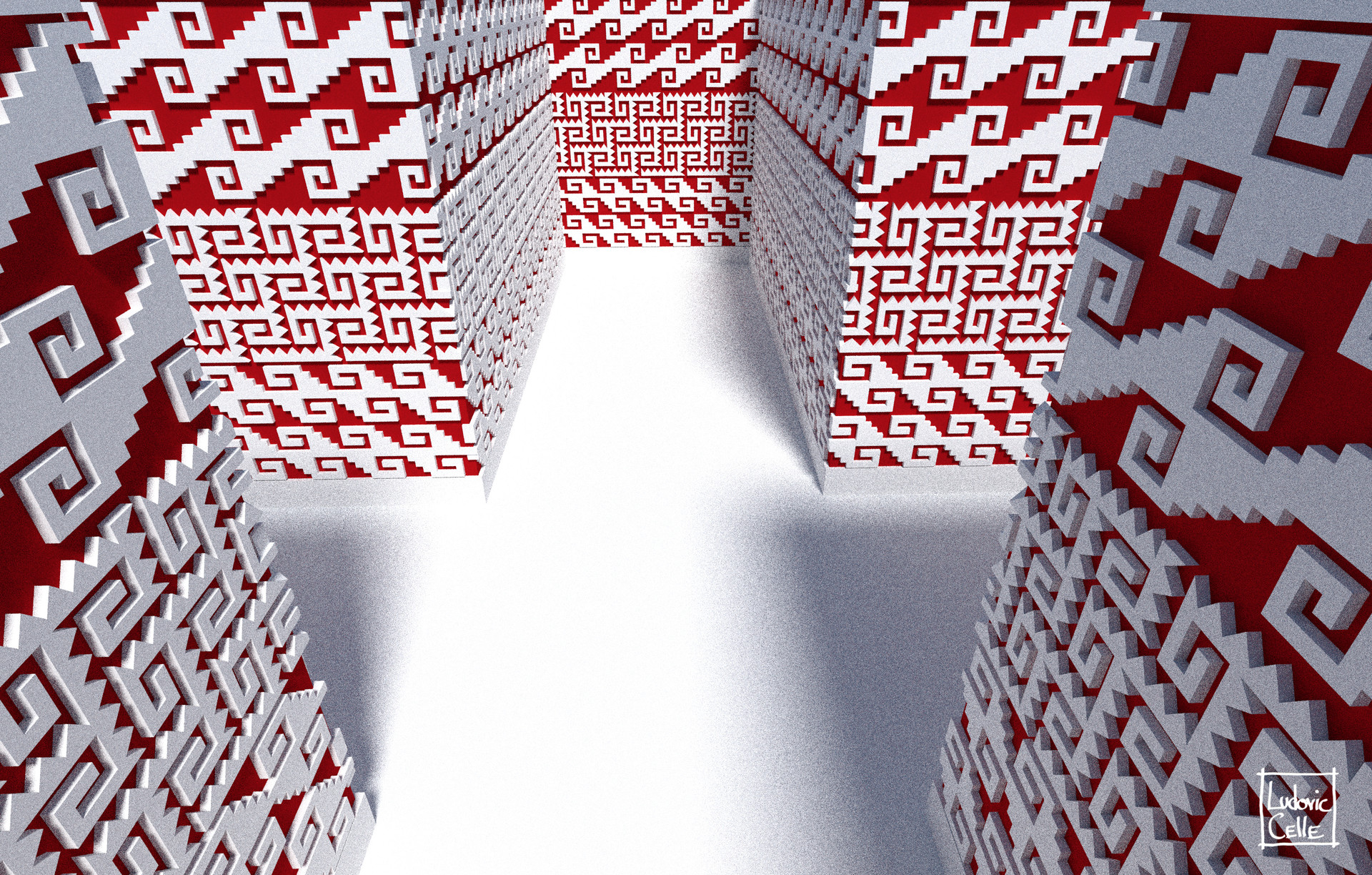
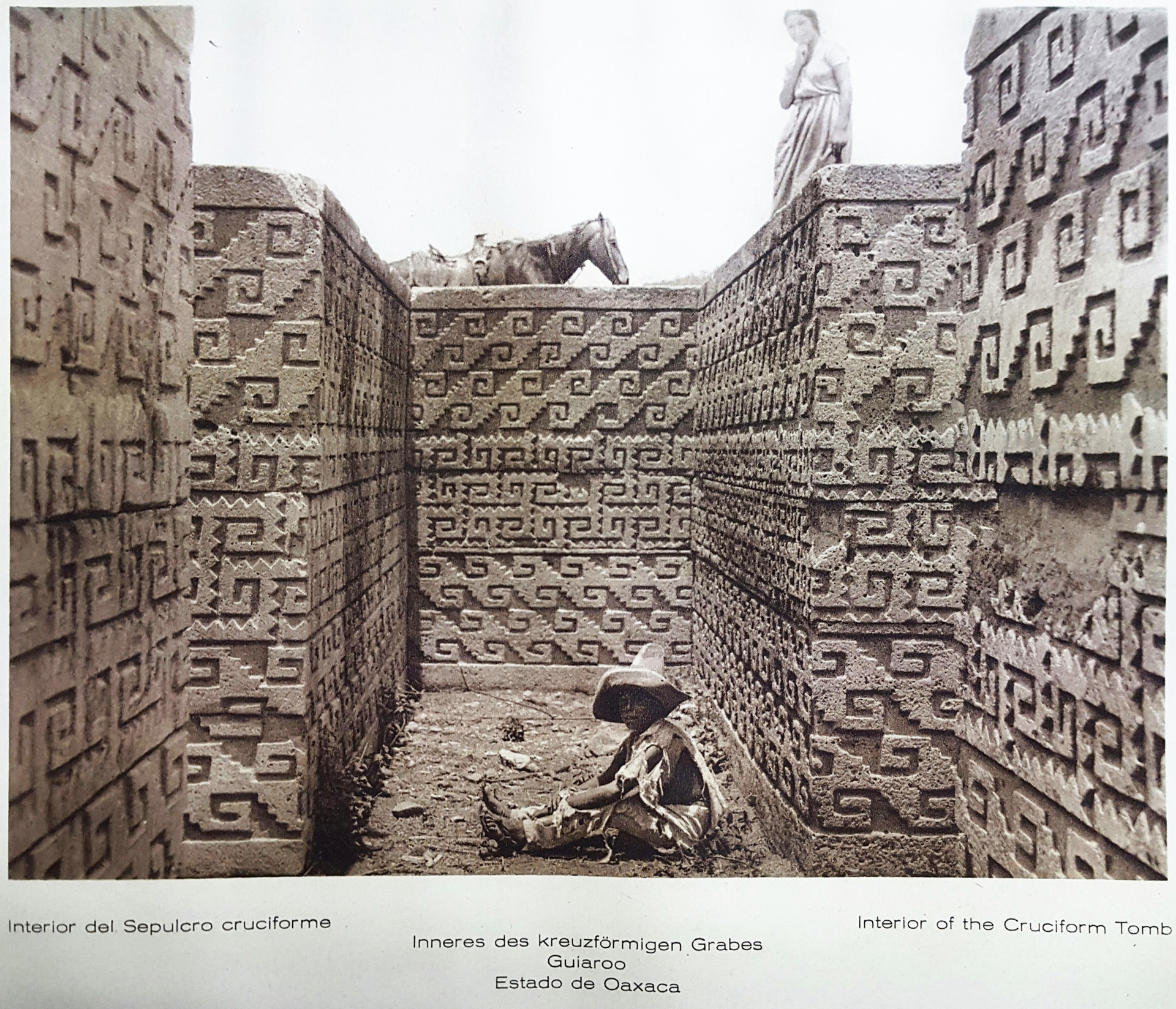
that site author replicated it with graphic art computer program...needless to say, it's covered with step frets...I think there are several of these cruciform
tombs, some of them since lost since the old photos...but there is another one on the web, with a curious caption!...brb...
quote
The "Hall of Columns," 120 x 21 feet in size, has six monolithic columns of volcanic stone that originally supported a roof covering the entire hall. The darkened doorway leads through a low and narrow passageway to the interior of another enclosure, now roofless, but also covered in ancient times. This chamber is one of the most astonishing artistic artifacts of pre-Columbian America. Its walls are covered with panels of inlaid cut-stone mosaic known as stepped-fret design. The motif of these intricate geometric mosaics are believed to be a stylized representation of the Sky Serpent and therefore a symbol of the pan-regional Mesoamerican deity, Quetzalcoatl.
... ... ...
... ... ...
Archaeologists are mystified regarding the use of this chamber. An early Spanish explorer, named Canseco, who visited Mitla in 1580, wrote of the Hall of Columns, "In this building they had their idols, and it was where they assembled for religious purposes, to make sacrifices to their idols, and to perform heathen rites". Regarding the interior chamber, Canseco says it was the residence of the high priest. The oldest information we have about the chamber however, and possibly the most revealing, is a legend that says the chamber was used for the final initiation of shamans who had been trained in magic and healing in the school of Mitla.
... ... ...
Mitla was considered to be the fabled home of Mictlantecuhtle, Lord of The Underworld. In the Seventeenth Century, the Church Of San Paublo was built upon the Mitla Courtyard C and the church was constructed of stone from the Prehispanic Mitla Temples. This archaeological site dismantling for church/monastery construction was common throughout all of Mexico until 1850, when Benito Juarez passed the Ecclesiastical Real Estate Nationalization Law which put an end to the practice.
Read more at
https://archaeologynewsnetwork.blogspot.com/2010/06/mitla-ruins-of-oaxaca-mexico.html#MJBsY3OFvizXrECl.99
https://archaeologynewsnetwork.blogspot.com/2010/06/mitla-ruins-of-oaxaca-mexico.html#qzmihuhewbYvcvGT.97
unquote
Mictlantecuhtle is the Tomb 7 Gold Pectoral figure, or said to be...
small quote I wanted was this:
"known as stepped-fret design. The motif of these intricate geometric mosaics are believed to be a stylized representation of the Sky Serpent and therefore a symbol of the pan-regional Mesoamerican deity, Quetzalcoatl. "
but that the chamber was an initiation locale is of note too...just passed by site noting all the Egyptian paintings are stages in an initiation process...the interiors of the temple, the underground tombs, everything tied into a progression an initiate was literally walked through...that, as a general thing the ancients did, makes sense...and the enigmas made sense to initiates...archaeology becomes the decoding, decipherment, of the initiates paths, and where the paths took them...and that pursuit bumps up against the savageries and hallucinogens and all that...bit like trying to infiltrate a modern prison gang...one in Honduras now has its own prison...I mean, only that gang is in that prison...so insular it has become...and repellant...
quote
| We found two stone buildings of good workmanship, each with a flight of steps leading up to a kind of altar, and on those altars were evil-looking idols, which were their gods. Here we found five Indians who had been sacrificed to them on that very night. Their chests had been struck open and their arms and thighs cut off, and the walls of these buildings were covered in blood. All this amazed us greatly, and we called this island the Isla de Sacrificios, as it is now named on the charts.[1] |
unquote
Bernal Diaz a favorite...book I ordered, British Museum Mesoamerica, came...and it has a bunch of things from that island...and looking for those, a pot in particular, I find this...go figure...
quote
The dust-up revolved around the Isla de Sacrificios, a tiny (haunted!) island that, Zelia discovered, housed the ruins of a site for human sacrifice. Once Zelia set up shop there to excavate it, the Mexican government immediately presented her with three setbacks: they slashed her funding; they limited the area in which she could work; and, because she was a woman, they gave her a supervisor. This was Salvador Batres, son of her archenemy, Leopoldo Batres.

unquote
quote

unquote
hmmph...tales of sound and fury...
:)
DavidDavid
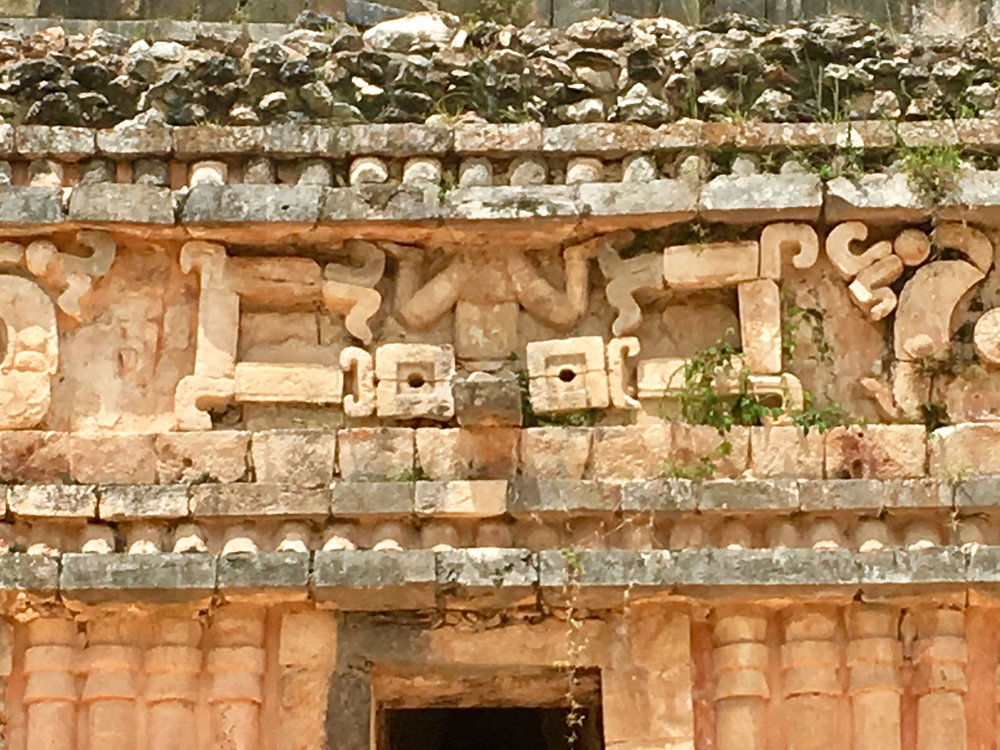

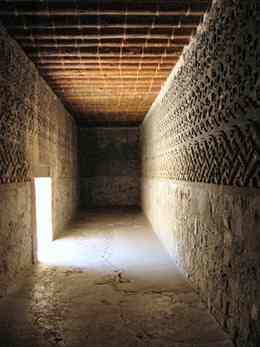








No comments:
Post a Comment